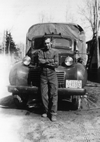4. American
I’VE WONDERED FOR DECADES. I studied America in college and wrote about it, then studied it some more and wrote about it some more. The driving motivation has been to understand what makes America tick, what lies at its cultural core, what makes America work, and what could make it work better.
Two momentous national events at the dawn of the 21st century begged the question—“What does it mean to be an American?”—louder than perhaps at any time since the Civil War. The presidential election of 2000 revealed a society so riven with division that neither side won. Then, within a year, the terrorist attacks of 2001 tapped an immense reservoir of unity. Neither the division nor the union negated the other. Both persisted in full force. Neither one by itself sufficiently represented America.
It occurred to me that the meaning of America could never be captured in a single event, frozen in a single snapshot in time, inscribed in a single document, nor embodied in the life of a single individual. Nor could America be defined by a single generation.
Instead, I surmised, the meaning of America is dynamic. If the meaning resides anywhere, it resides somewhere within the story of how Americans themselves, both newcomers and natives, find meaning in their lives in this country. The meaning of the story itself is in constant flux, because the story gets passed down and retold from one generation to the next. Each time that the heirs to the story retell it, they bequeath to their children not just a common identity rooted in the past, which is important, but also a new and unique aspiration geared toward the future, which is even more important.
For these reasons, I believe the best way that I, the son of a Polish immigrant and grandson of Italian immigrants, can fathom the meaning of the American experience is by sharing the story of my own family in America in the 20th century. I harbor no illusions that the story of my family can encapsulate the entire story of America over any period of time. No single nationality, tribe, race, or religious community created this country, and none of them alone can fully reflect it. The geographic, cultural, racial, ethnic, religious, social, and economic diversities of this nation are simply far too immense. Besides, my family is downright quirky at times, as are all families in their own ways. It is a very good thing that the greatness of America extends far beyond the quirkiness of my family.
Nevertheless, it is intriguing how much of the national experience has seeped into the family’s experience. It is compelling how many of the tragedies and triumphs that have occurred at home have occurred in so many other homes. And it is amusing how many of the extremes within the family mirror the extremes within society at large.
Personal fears correlate with national anxieties. Family fights echo social battles. The resolution of family disputes imparts clues to the resolution of social conflicts. And the family’s proudest moments emulate the nation’s finest hours.
This book is not a memoir about me or about my interpretations of things. It is more akin to a collection of memoirs—or of overlapping interpretations of things—none of which would be as illuminating in the absence of the others. The book is the product of interviews with three generations of family members, the oldest of whom have shared memories of their forefathers and the countries from which they came. To verify facts and to clarify foggy reminiscences, I have relied on genealogical and historical research. By combining oral history with historical investigation in this way, I have tried to portray, as closely as possible, the truth—not just about my family but also about the times and societies in which they have lived.
Most of the time, the story proceeds in a chronological fashion. But Part Three, which is devoted to “going separate ways,” breaks from the norm on purpose. In Part Three, each individual shares his or her own story about self-discovery in America as one link in a chain of chapters that overlap in time. The benefit of this approach is to show how the same historical period can be viewed through multiple different lenses, creating alternative impressions of the meaning of the time. The stories in Part Three appear in sequential order not of the births of the featured individuals but rather of the adult crises that spur the individuals to define their roles within the family and the community.
Part Three, though, is just one part of the larger story spanning five generations over nearly 100 years. In its breadth, this is a story about immigrants who struggle to assimilate upon their arrival in America, who acquire most of the trappings of the American dream, and who then observe how their own children reinterpret what it means to be an American. This is a story about how the meaning of America changes over time—and how America means different things to different people.
But this is also a story about coming back together. This is a story about how people from within and across generations can look beyond their differences to discover, from one another, unexpected lessons to pass down to the next generation of children, who will presumably refine those lessons further and redefine America yet again. This is a story about what has endured in America and about what, I hope, will persevere.
